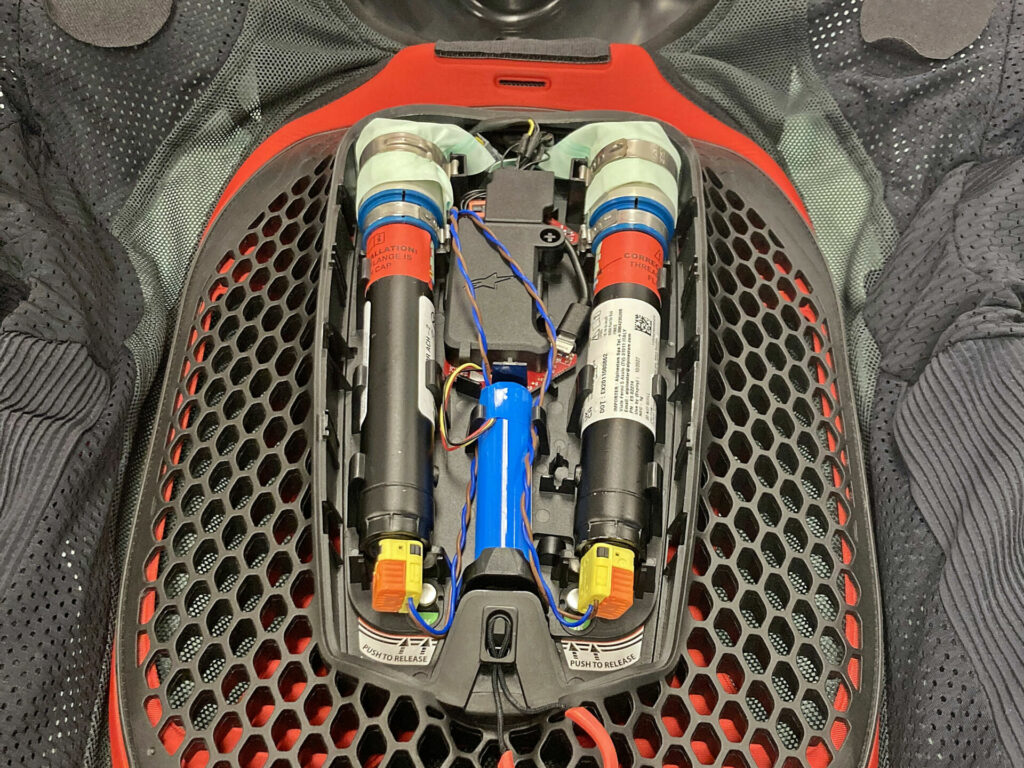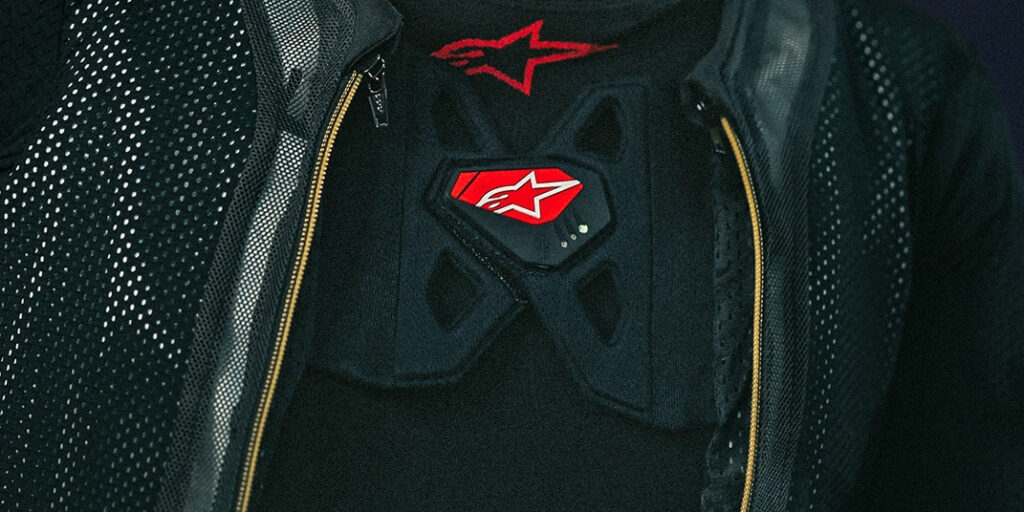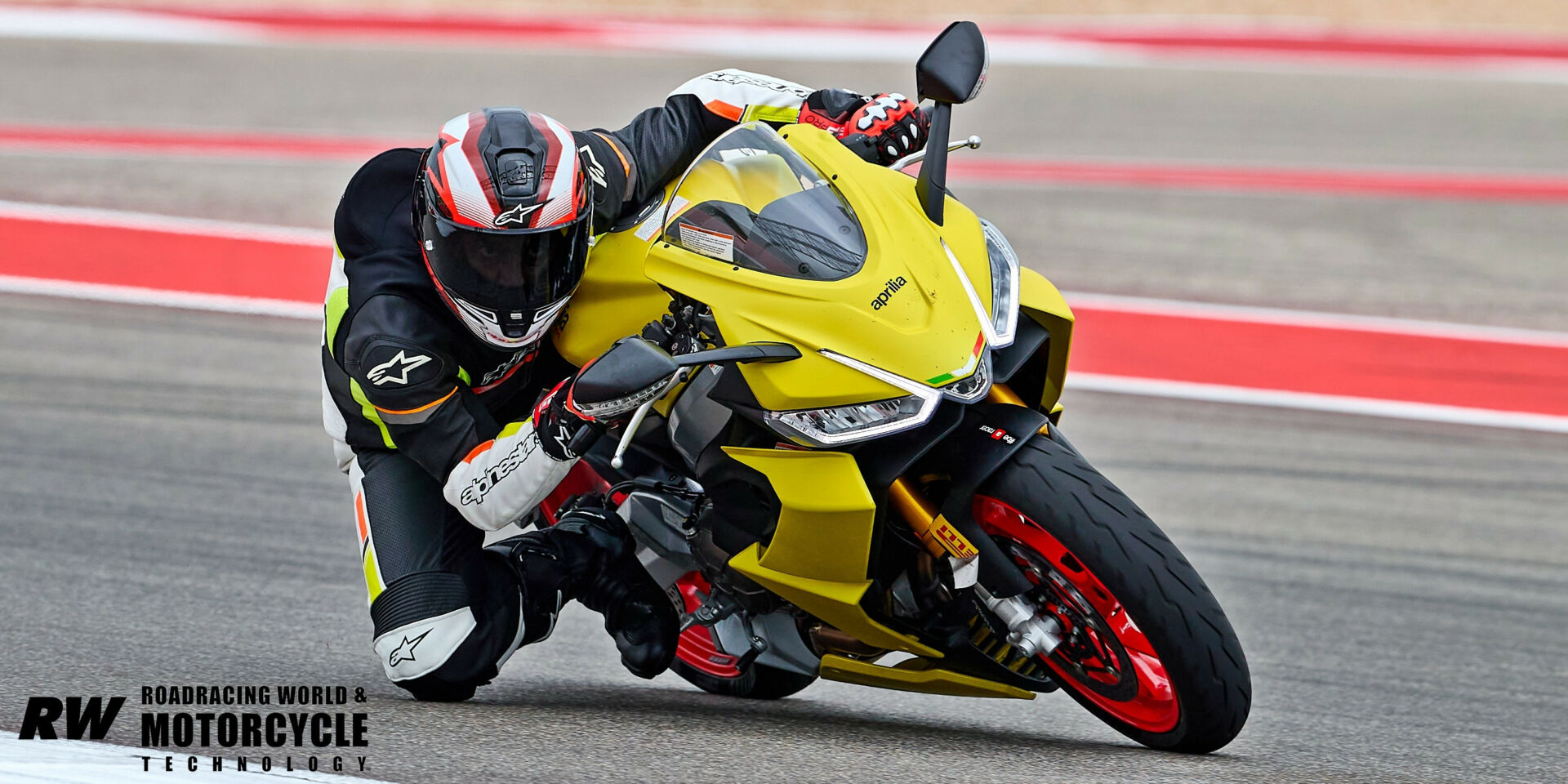The best piece of protective equipment does you no good if it’s sitting on the shelf in the garage or hanging in a closet when you crash. Part of the trick of designing truly effective protection is making it easy to use and operate.
Alpinestars’ new Tech-Air 7X airbag system is, in my experience, the most comfortable, easy-to-use and easy-to-operate track-oriented airbag system I have used to date. It does not provide the absolute highest, MotoGP-rider level protection of its most protective system. But it is user-serviceable, easy to get on, and is cooler than other systems. And it is truly universal, in that it can be used under any suit that provides enough space for the system to deploy in the case of a crash.
I wore the system for seven 20-minute sessions at an Aprilia Racer Days event at Circuit of The Americas. When the sun came out, it was baking; when it was cloudy, it was humid. It was a test of the system’s wearability, and it passed that evaluation with five stars.

Tech Overview
Best to think of the Alpinestars Tech-Air 7X as an evolved version of the Tech-Air Race. It is FIM-homologated, meaning that you can race in the system in International-level competition where airbags are mandatory. It comes preset in Track mode, but the Tech-Air app allows the user to switch it to Road mode when desired. When deployed, the system decreases impact force by 90 percent compared to a passive Level One back protector.
The protection configuration differs from the company’s Tech-Air 10 system. The Tech-Air 7X does not have hip protection, and it offers individual bladders on each side of the riders’ chest. The Tech-Air 10 has a solid panel across the chest, offering more protection but flowing less air to the rider. The Tech-Air 7 also is worn like a vest, rather than a mid-thigh bodysuit (similar to a warm-water wetsuit) with the Tech-Air 10. The Tech-Air 7X inflates to cover the riders’ chest, back, collarbones and tailbone.
The Tech-Air 7X comes with two argon cartridges for two separate inflations, and the cartridges can be replaced at the track by the rider. A pull handle releases the protective cover over the internal mechanism, and the cartridges can be unscrewed and replaced literally in seconds. Each cartridge costs approximately $99, and the unit can be deployed four times before it has to be sent back to an Alpinestars service center for inspection and refurbishment. The units are carefully designed to ensure that cartridge replacement is done correctly – if not, the cover cannot be replaced. For racers who are obsessive about weight reduction, one of the argon cartridges can be removed and replaced with the plug that comes with the system.
Activating the system is as simple as attaching two velcro tabs across the chest. An LED array displays the system charging status and its mode, road or track.

Riding Impressions
I found the Tech-Air 7X as easy to slip into as my regular passive Alpinestars protective vest, and the GP Force suit slid easily over the back protector/inflation control unit hump. The back protection construct itself is CE-certified as a Level One protector, which means that even if the airbag failed to deploy in a crash, the rider still has protection against impact forces. It’s nowhere near the protection of a deployed airbag, but I’m old enough to remember when we raced with no back protector at all, so it’s still a dramatic improvement over those days.
The only time I really thought about the Tech-Air 7X system was when I would sit up to brake. The airflow across the chest was noticeably greater than that of the Tech-Air 10, and it made a real difference in rider comfort.
Other than that, I zipped it up in the morning, took it off when I was done, and never thought about it the rest of the day. And that, for me, is the highest praise I can give safety gear without crashing.
I feel like until I experienced this unit, I was paying for airbag levels of protection with decreased comfort and ease of operation. While this system does not offer the protection of the Tech-Air 10, it is easier to use, easier to wear and easier on the rider when they are on the machine. And if that’s what it takes to get riders into an airbag system, that’s nothing but good.
Suggested retail price is $999.95.







